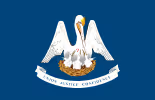Top-Rated Debt Collection Agency in Minnesota
Efficient and Trustworthy Debt Collection in Minnesota - No initial fees, pay only when we succeed. Request your FREE Consultation or submit your claim right away.

Seamless Debt Recovery in Minnesota: Why Debitura is Your Best Choice for Outstanding Collections
Seamless Debt Recovery in Minnesota: Why Debitura is Your Best Choice for Outstanding Collections In the world of debt recovery, Debitura shines as a beacon of efficiency and effectiveness. With expertise in accounts receivables management and legal debt collection, as a top Debt Collection Agency Minnesota, we strive to make your debt recovery process as effortless as possible. Our skilled professionals navigate the ins and outs of Minnesota's debt regulations with ease, offering superior solutions to your outstanding debt concerns. Delve into the Debitura experience - Your comprehensive answer to maintained cash flow and recovered debts.

A to Z business debt recovery solution in Minnesota.

Data-guided, tailor-made debt recovery in Minnesota.

Harnessing 500+ international experts for efficient debt collection.

87% debt recovery success in Minnesota at affordable rates.
Key facts
- Debt Collection Laws: Debt collection in Minnesota is regulated by the Fair Debt Collection Practices Act and Minnesota Statutes, section 332.37.
- Prohibited Practices: Debt collectors are prohibited from using deceptive or misleading communication, threatening wage garnishment without legal basis, and other unfair practices.
- Statute of Limitations: Minnesota has a six-year limitation period for contract claims, unless otherwise prescribed by the Uniform Commercial Code.
- Garnishment Exemptions: Minnesota law provides exemptions for homestead property, personal property, certain benefits, and retirement funds from garnishment.
- Licensing Requirements: Collection agencies in Minnesota must obtain a license from the Minnesota Department of Commerce, unless exempted.
- Interest Rates: Minnesota statute limits interest rates to 6 percent in general, and 8 percent for written contracts.
- Late Payment Fees: In Minnesota, there is an 8% per month cap on late fees for overdue invoices.
- Wage Garnishment: The maximum part of an individual’s disposable earnings for a pay period that can be garnished is 25% or the amount exceeding 40 times the federal minimum hourly wage.
- Small Claims Limit: The dollar limit for small claims in Minnesota is $15,000, and $4,000 for consumer credit cases.
This guide is not legal advice and laws/rules may change; consult a qualified professional for personalized assistance. Use at your own risk.
Introduction to Debt Collection In Minnesota
Debt collection is a legal process initiated by creditors to recover the loaned money when borrowers, known as debtors, are unable or unwilling to repay their debts. It is an essential financial activity that maintains the balance and integrity of the credit market. Understanding its nature, key actors, and primary stages can better equip businesses and individuals in Minnesota to traverse its complexities.
Key actors in debt collection include the debtor, creditor, and the collection agency. Debtors are individuals or businesses that owe money to the creditor. The creditor, typically a bank, credit card company, or any other financial institution, is the party that extended the loan or credit. When the debtor fails to honor the repayment agreement, the creditor may employ a collection agency. These agencies specialize in debt recovery and work either on behalf of the creditor or, in some cases, buy the debt and conduct the collection efforts independently.
As the various parties interact, unpaid debts move through key stages of the collection process. The pre-legal stage involves reminder letters, phone calls, or settlement discussions to encourage the debtor to repay the defaulted loan. If unsuccessful, the process advances to the legal stage where formal legal actions are taken. Debtors are sued, and lawyers may become involved to resolve the matter in court. If court intervention does not result in debt resolution, the process reaches the debt enforcement stage. Here, compulsory measures such as property seizure or wage garnishment may be employed on the debtor to recover the owed funds.
Importance of Understanding Debt Collection
Understanding the intricacies of debt collection is crucial to maintaining a healthy financial status. As a debtor, knowing your rights and responsibilities can protect you from predatory collection practices. As a creditor, understanding legal avenues for debt recovery can maximize the likelihood of recouping resources.
Individuals or businesses in Minnesota dealing with debt collection should be equipped with adequate information about the process. Familiarity with key concepts and knowing how different stages unfold can help in effectively managing debts and fostering responsible economic behavior.
With the distinct regulations regarding debt collection in Minnesota, understanding the unique elements of the debt collection process within this state's framework is imperative. In the subsequent sections of the guide, we delve deeper into debt collection laws, processes, and more facets specific to Minnesota, equipping you with key insights and actionable advice.
Debt Collection Laws In Minnesota
In Minnesota, the process of debt collection is guided by a combination of federal and state rules. These laws ensure that the debtors are treated fairly and that their rights are respected during the collection process. It is thus essential for both consumers and crediting entities in Minnesota to be aware of these policies to promote fair and ethical debt collection practices.
At the federal level, key laws that govern debt collection include the Fair Debt Collection Practices Act (FDCPA), the Fair Credit Reporting Act (FCRA), and the Telephone Consumer Protection Act among others. The FDCPA, in particular, sets certain limitations on the behavior and actions of collection agencies pursuing a debt, restricting them from partaking in harassment, giving false or misleading representations, and practicing unfair collection techniques.
Furthermore, regulatory bodies such as the Consumer Financial Protection Bureau (CFPB) and the Federal Trade Commission (FTC) play a significant role in overseeing debt collection activities. They are responsible for enforcing these federal debt collection laws and can provide guidelines and resources for resolution in disputes between debtors and collectors.
Minnesota's State Debt Collection Laws
Within Minnesota, debt collection is regulated by two laws: the Fair Debt Collection Practices Act of 1977 and Minnesota Statutes, section 332.37. These laws are applicable to all collection agencies, collectors, and debt buyers operating within Minnesota.
According to the Minnesota Statutes, section 332.37, collectors are prohibited from specific harmful practices such as threatening wage garnishment or legal action by a particular lawyer unless they have actually retained the lawyer. They are also barred from using methods that contravene Minnesota law, providing legal advice, and partaking in misleading communication with debtors. They also cannot suggest that healthcare services will be withheld in emergency situations to enforce debt collection.
Moreover, debt collectors are required to return any claim or papers of value deposited with them upon written request of the client within a month's time. They must also account for all money collected and must also provide written reports to claimants or forwarders upon request. Notably, they are not allowed to operate under a name that implies an association with a government department or agency.
Practical Application of Minnesota's Debt Collection Laws
The duration and enforcement of debts in Minnesota is also guided by state laws. Generally, a creditor must bring a lawsuit within a six-year limitation period unless the Uniform Commercial Code prescribes differently. This six-year limitation applies to contract claims generally.
In regard to garnishment exemptions, Minnesota allows for certain properties to be exempt from garnishment attempts by creditors. These exemptions often include homestead property, certain benefits and personal property such as vehicles, compensation, and retirement funds.
Additionally, to operate as a debt collection agency in Minnesota, one must secure a license from the Minnesota Department of Commerce. Exemptions from this requirement include entities such as banks, lawyers, and credit unions. Moreover, these collection agencies must also maintain a corporate surety bond and comply with specific disclosure requirements when their initial contact with debtors is by mail.
Lastly, it's worth noting that the Minnesota Attorney General's Office actively enforces consumer protection laws in the debt collection industry. Recent debt collection cases in Minnesota have delved into issues such as joint account garnishments and due constitutional process.
In conclusion, both federal and state laws regulate debt collection in Minnesota. Debt collection agencies must adhere to specified prohibitions detailed in Minnesota Statutes and comply with the provisions of the FDCPA. This model ensures reliable regulation and effective protection for consumers in Minnesota against malpractices in debt collection.
Risk Free Debt Collection
Upload your claim and get started with our 100% no-cure-no-pay collection solution.
The Debt Collection Process In Minnesota
The debt collection process in Minnesota is governed by both federal and state laws, ensuring a fair process that aims to balance the rights of the debtor and the creditor. Here are the key steps involved in the debt collection process in Minnesota, taking into account the specific rules and regulations of the state.
Evaluating the Case
Before initiating the debt collection process, the creditor first evaluates the case. It's essential to ensure that the claim is within the state's statutes of limitations, as Minnesota has a six-year limitation period for contract claims, unless the Uniform Commercial Code prescribes otherwise. Examining the validity of the debt, the amount owed, and the debtor's capacity to pay is a vital phase of the process.
The creditor then embarks on the pre-legal or amicable phase, reaching out to the debtor through various channels, with the aim of finding a mutually beneficial solution. Letters, emails, and phone calls are typically used to remind the debtor of their outstanding obligations and to negotiate payment arrangements if feasible.
The case and its legal considerations are then evaluated further. At this stage, the determination is made whether the case is fit for the small claims process. It's noteworthy to mention that Minnesota sets the dollar limit for small claims at $15,000 and $4,000 for consumer credit cases.
Legal Debt Collection Steps
If satisfactory arrangements cannot be agreed upon in the amicable phase, the creditor may choose to pursue legal means to recover the debt. A lawyer specializing in collections can file a lawsuit on behalf of the creditor. When successful, this leads to a court order that mandates the repayment of the debt.
Minnesota's rules require collection agencies to possess a license from the Department of Commerce. The state also limits interest rates on overdue amounts to 6% in general, rising to 8% for written contracts. An 8% per month cap is also enforced on late fees for delinquent invoices.
It's also important to note that Minnesota law stipulates that collection agencies cannot engage in deceptive or misleading communication or threaten wage garnishment without a legal basis.
Debt Enforcement and the Possibility of Wage Garnishment
Once a judgment in favor of the creditor has been secured, the debt enforcement process begins. This step can involve levying bank accounts, seizing non-exempt property, or enacting wage garnishment. It's significant to point out that Minnesota law affords certain exemptions from garnishment including homestead property, personal property, certain benefits, and retirement funds.
As for the wage garnishment, the maximum portion of an individual’s disposable earnings for a pay period that can be garnished is 25% or the amount surpassing 40 times the federal minimum hourly wage. This is a significant tool that garnishees can use to recover debts owed to them.
Understanding the debt collection process in Minnesota is crucial for both creditors and debtors. The process strikes a balance between intrepid credit collection and the ever-important consumer rights - a balance that is regulated and maintained by the state's robust financial laws.
Statute of Limitation in Minnesota
In the realm of debt collection, understanding the concept of a Statute of Limitation is of paramount importance. A statute of limitations is essentially a law that sets the maximum period that parties involved have to initiate legal proceedings from the date of an alleged offense, be it civil or criminal. The existence of this law can significantly affect debt collection processes because once the period stated within these statutes expires, a debt is considered "time-barred". Collectors may continue to approach you for payment, but the debt is no longer legally enforceable.
From another perspective, these statutes are in place to ensure fairness in debt collection. It is often challenging for a debtor to defend an old claim as witnesses may disappear over time, documents may be lost, and memories fade. Thus, the statute of limitations serves to protect individuals and organizations from defending themselves against claims that are too old.
It is hereby crucial to know the specifics of the statute of limitations on various types of debt in Minnesota. As a creditor or a debtor, this knowledge will aid you in managing and recovering debts effectively and within legal bounds.
Limitations for Different Types of Debts in Minnesota
The state of Minnesota statute of limitations for debt collection is defined in Minn. Stat. Ann. § 541.01 et seq. The limitation period varies based on the nature of the claim.
For both written and oral contracts, the statute of limitations in Minnesota operates for a tenure of six years. To elucidate, if a debtor has not made any payment or acknowledgment of debt towards a written or oral contract over a period of six years, the debt may become time-barred, restricting the creditor's ability to sue for the debt.
When it comes to injury cases, the statute of limitations operates for a shorter span: just two years. Thus, any legal action against a personal injury claim should be initiated within these two years. For property damage, the period set by the statute of limitations extends up to six years, similar to that of written and oral contracts.
Understanding these limitations helps you gain a firm grasp while dealing with various debts. This knowledge thereby supports you to sustain good credit health and manage your finances strategically.
Interest Rates on Late Payments in Minnesota
Understanding interest rates, particularly in the context of late payments, is crucial to managing debt collection effectively. Interest rates represent the cost of borrowing and constitute a significant component of debt. They influence the amount owed, and in the case of late payments, can add a substantial sum to the debt owed. Therefore, being aware of how interest is charged on late payments is an integral part of managing financial obligations and avoiding overwhelming debt.
Minnesota state law outlines specific rules concerning interest rates on late payments. Traditionally, usury laws are in place to limit and provide guidelines for how much interest a lender may charge. While all states have such laws, the actual interest rates can often exceed these statutory limits due to specific exceptions and contract waivers entered into by consumers. Although at first glance this might appear burdensome, many borrowers accept these terms to ensure access to credit facilities.
Specifics of Minnesota Interest Rate Laws
In the State of Minnesota, legal limitations cap general interest rates at 6 percent, and written contracts can allow for interest rates up to 8 percent. However, there are multiple exceptions to these limitations. For instance, state banks, state credit unions, dealers under the Securities Exchange Act, and loans secured by savings accounts are exempt from these interest rate limits. It's crucial to be aware of these exceptions to better understand the potential financial obligations and to manage debts more effectively.
If a lender is found to be charging usurious (unlawful) interest rates, the contract may be void. The borrower has a right to recover all the interest and premiums paid. Furthermore, if banks, savings and loans facilities, and credit unions are found to be charging usurious interest, they forfeit their rights to all interest. The borrower can also recover twice the interest paid.
For judgment interest rates, the rate is determined on or before December 20 of the previous year by the state court or administrator, based on the secondary market yield. It's important to understand that these laws and interest rate guidelines are subject to changes, either through new legislation, case law, or ballot initiatives. As the rates may potentially fluctuate annually, constant review and staying updated is necessary.
Understanding the specifics of interest rates in Minnesota is an essential part of effective debt management. Acknowledging how interest is charged and handled on late payments can preemptively prevent financial burdens and assist in successfully navigating the state's financial and judicial system.
Late Payment Fees in Minnesota
In the process of debt collection, one term that frequently arises is "late payment fees." Late fees are the additional charges applied when a debtor fails to pay off an obligation by the due date. They are imposed to incentivize timely payments and cover the costs associated with handling overdue accounts. Late payment fees are an integral aspect of debt collection as they can significantly increase the total debt if not addressed promptly. Therefore, it's essential for both creditors and debtors to understand how these charges work.
Minnesota law regulates late payment fees to avoid excessive charges that could trap a debtor in unending debt. The state rules permit a cap of 8% per month on overdue invoices. This may seem high, but it's instituted to encourage prompt repayment and mitigate the risk taken on by creditors. Knowledge of these legal provisions is instrumental, especially for businesses engaging in debt collection or persons entangled in late payment circumstances.
Understanding Minnesota's Rules on Late Payment Fees
Minnesota's approach towards late payment fees aims to strike a balance between the rights and obligations of the debtor and the creditor. As such, the state does not mandate a grace period for the payment of debts after they become overdue. This signifies that once your payment crosses the due date, late payment fees can immediately be applied to your debt.
Despite the absence of a statutory obligation for a grace period, it is highly recommended that businesses practice allowing a grace period of seven days. This approach not only positions the business as ethical and understanding but also increases the chances of debt recovery, as debtors may appreciate this consideration and are more likely to prioritize such payments.
In conclusion, late payment fees play a crucial role in the debt collection process in Minnesota, and both businesses and individuals ought to be informed about the governing rules. By doing so, businesses can make better-informed collection strategies, while consumers can manage their finances more effectively. The 8% cap on late payment charges and lack of a mandated grace period are two such considerations that significantly shape debt collection practices in Minnesota.
Small Claims Procedures in Minnesota
For those dealing with minor financial disputes, such as unpaid debts, Minnesota’s Small Claims Court, also known as a conciliation court, is a valuable resource. The purpose of this court is to ensure that everyone has access to a legal process that is just, efficient, and accessible. Claims in this court are meant to be simpler and more straightforward, which eliminates the need for an attorney.
Small Claims Court in Minnesota operates under the statutes Minn. Stat. Ann. §§ 491A.01 to 491A.03 and Minnesota General Practice Rules, Rules 501 to 525. Information about the court can be easily found on the official Minnesota Courts website.
The limit for claims in this court is set at $15,000, although the limit reduces to $4,000 for consumer credit cases. These limitations are put in place to ensure that the small claims court remains a viable and cost-effective option for resolving minor disputes without having to resort to the more complex and expensive district courts.
Laws and Limitations
The defendant in a small claims case must be sued in the county in which they reside. For corporations, they can be sued in the county where they have a registered agent, place of business, or office. In landlord-tenant disputes, apart from evictions, the lawsuit must be filed in the county where the rental property is located.
The process of filing a suit includes sending out a service of process via first-class mail by the court administrator, or by electronic means if the party has agreed to or is required to accept it. If the claim is over $2,500, the plaintiff must send the service of process using certified mail. If the defendant is located out-of-state, the plaintiff is responsible for arranging the service.
Unlike other courts, the defendant doesn’t need to file a formal written response. However, if the defendant wants to file a counterclaim, they must do so at least five days before the trial date. If the counterclaim exceeds $15,000, the case must proceed in the district court.
Representation and Appeals
Small claims cases in Minnesota are designed to be simple, eliminating the need for legal representation. Therefore, attorneys are not allowed to represent litigants in small claims court. This rule increases accessibility for all involved parties and reduces expenses.
However, if either litigant is not satisfied with the judgment, they have the right to appeal. An appeal can be filed by presenting a Demand for Removal, an Affidavit of Good Faith, and an Affidavit of Service to the Court Administrator within 20 days of the date the judgment was mailed.
It should be noted that the small claims court does not handle eviction cases or allow for jury trials. Its focus is to provide an accessible and cost-effective legal solution for minor disputes, ensuring that everyone has access to justice.
Wage Garnishment in Minnesota
Wage garnishment, also known as wage attachment, is a legal process through which a creditor can deduct money directly from a debtor's paycheck to recover a debt. This procedure is typically approved by a court order, and allows a debtor's employer to withhold a portion of their earnings.
Wage garnishment can be used for various types of debts, including credit card bills, medical expenses, child support, alimony, taxes, and student loans. As a debt collection method, it provides creditors with some assurance of debt repayment and mitigates the risk associated with lending.
However, the practice of wage garnishment is regulated by both federal and state laws designed to ensure fair debt collection processes and to prevent draconian measures that might plunge workers into financial destitution.
Minnesota Wage Garnishment Laws
In Minnesota, wage garnishment is governed by specific laws and guidelines that protect both creditors and debtors. Firstly, before wage garnishment can begin, creditors must secure a court order. This ensures that wage garnishment only occurs after a legal determination of default has been made.
The maximum portion of an individual’s disposable income that can be garnished in Minnesota is capped at the lesser amount between 25% of disposable earnings and any amount that surpasses 40 times the federal minimum hourly wage. "Disposable earnings" refers to the part of an employer's salary that remains after subtracting all lawful deductions, including federal, state, and local taxes, and contributions to retirement plans and health insurances.
Exceptions to the 25% regulation exist, particularly with regard to debts related to child support, bankruptcies, or unpaid taxes. In these cases, the laws might permit a higher percentage of wage garnishments.
Implications for Debtors and Creditors
For debtors, understanding Minnesota's wage garnishment laws is crucial in navigating situations involving sizable debt. While these laws might be burdensome, they are designed to provide a means for credit repayment without leaving the debtor entirely destitute. If faced with wage garnishment, consulting with a financial advisor or legal counsel is often advisable to ensure protection of rights.
For creditors, careful compliance with wage garnishment laws in Minnesota is essential. Unauthorized or excessive garnishment might result in penalties or litigation. Creditors need to ensure they have a valid court order before proceeding with wage garnish and must limit the garnishment to the stipulated amount.
Ultimately, wage garnishment is one tool in the broader context of debt recovery. It has the potential to provide an effective, albeit last-resort, solution for debt repayment; yet, it must be applied responsibly and judiciously to ensure the protection of both creditors' and debtors' rights.
.webp)
.png)
.avif)
.avif)
.avif)
.avif)
.avif)
.avif)
.avif)

.avif)

.avif)






.svg.avif)




.avif)
.avif)

.avif)
.avif)



.avif)



.svg.avif)

.avif)

.avif)
.avif)
.avif)
.avif)
.avif)
.avif)
.avif)
.avif)
.avif)
.avif)
.avif)
.svg%20(1).avif)
.svg)

